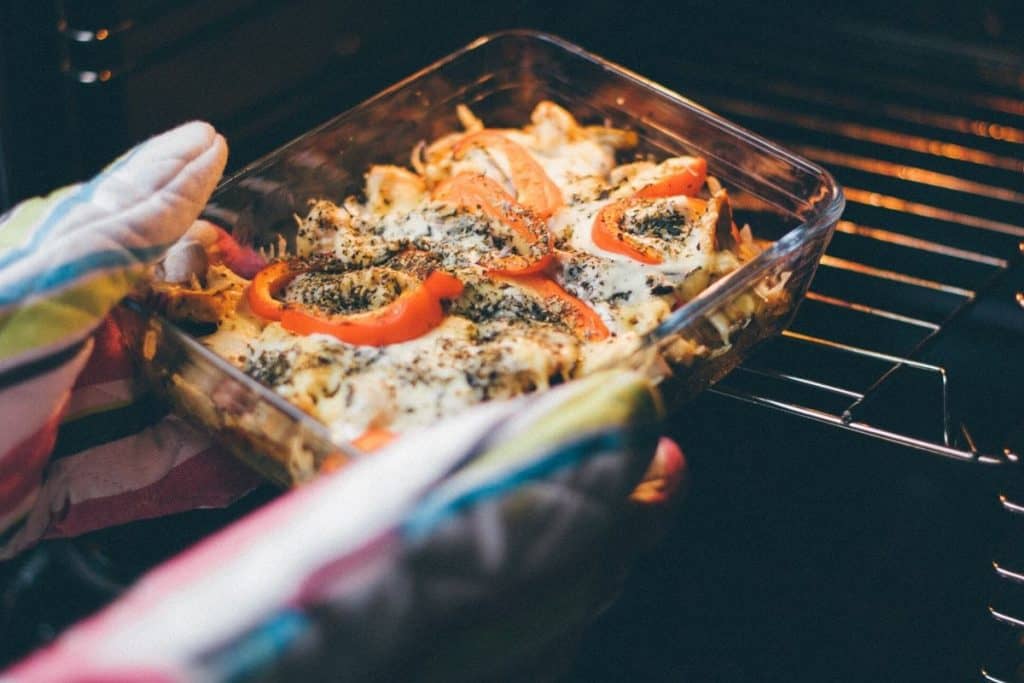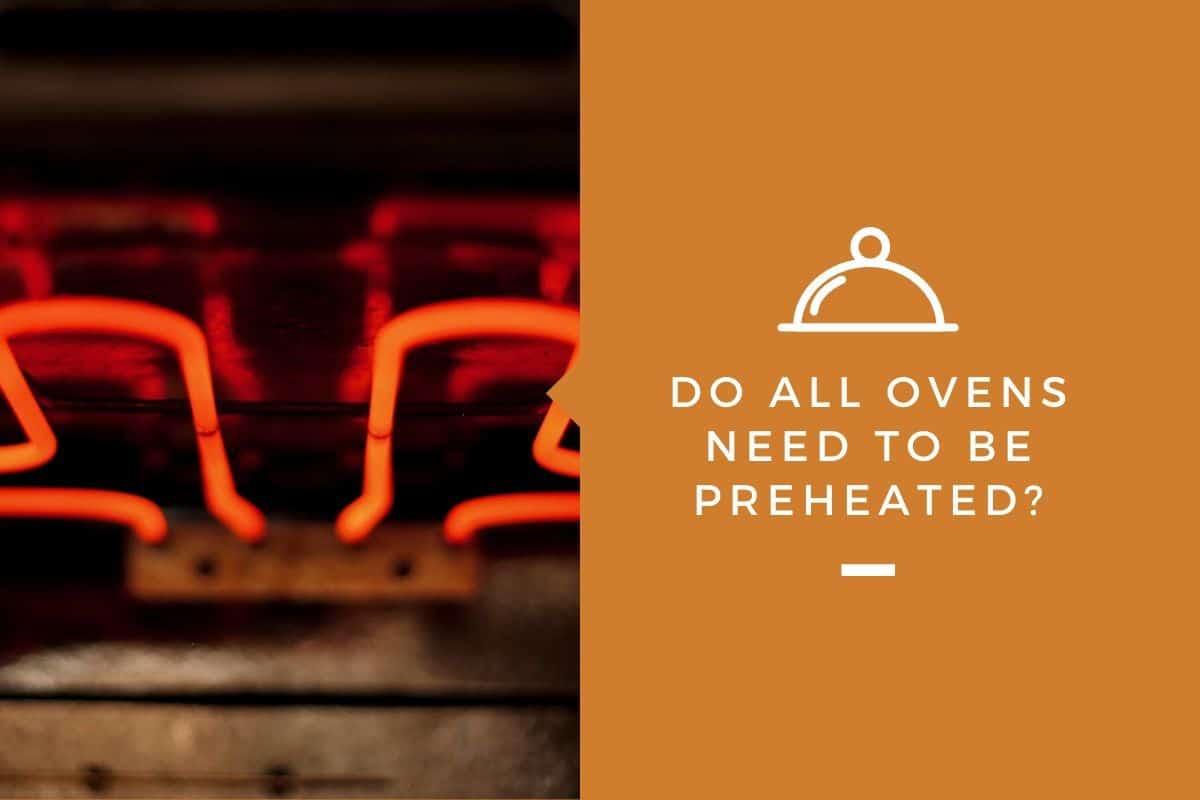Conventional ovens are, unlike microwaves, not so quick. That doesn’t mean they aren’t great. They’re spacious, they are adjustable, and once the meal is placed inside the oven there’s not much left to do but to wait for the oven to finish cooking the meal. While the wait is rather long, it can be shortened by preheating the oven.
But do all ovens need to be preheated?
All ovens need to be preheated but only for certain ingredients or meals that must be hit with a certain temperature just as they’re placed in the oven. This is common when baking, for instance. Most other meals can be placed in the oven while it’s heating up, as long as the time it takes for the oven to heat up is accounted for.
In this article, we’ll take a deeper look at why most ovens must preheat and what there’s to do about it to make cooking an oven a less time-consuming procedure.
Keep in mind that preheating an oven is like waiting for the water to get hot before jumping in the bath or stretching before a run. It’s an essential part of the procedure and skipping it will, of course, impact the outcome.
That was quite dramatic, wasn’t it? Let’s get on with this article.
How Do You Know an Oven Is Preheated?
Personally, I just fire up that baby and wait for a 5-10 minute period before I place the meal in the oven. I always use a thermostat to keep track of the inner temperature. Keeping my focus on the inner temperature and not the time the meal has spent in the oven makes preheating less important for me.
But picture a world where thermostats don’t exist, how would I know when my oven had finished preheating?
Most conventional ovens come with indicator lights and/or LCD-displays that will monitor the preheating-phase and inform the user when the oven has reached the desired temperature.
Indicator lights may either turn on when the oven has finished preheating or turn off when the oven has reached the desired temperature. You’ll figure out what your oven does. If you don’t, I’d recommend you read the user manual to see if the manufacturer has provided another solution.
Many LCD-displays will display a set of symbols that indicate if the oven is preheating or has reached cooking temperatures while others may display the temperature or an animated timer on the display.
Finally, some ovens let out a “beep” when they’ve finished preheating. I’m sure there are a bunch of other indicators but these are the ones I’m familiar with – if you can come up with more please let me know in the comments!
Is It Bad Not To Preheat an Oven?
Not preheating an oven is bad when baking. Yeast, baking soda, and baking powder react to heat so if you’re using any of these ingredients as leavenings you should make sure to preheat your oven before you get to cooking.
But why?
Many baked goods should be cooked in the oven for a matter of minutes at relatively high temperatures to be browned and rise. Just a matter of minutes is enough for them to be cooked all the way through and leaves both top and bottom browned.
If the oven hasn’t preheated it won’t be able to do that. Besides, when some ovens are turned on, the bottom heating element gets hot minutes before the top one which will result in an uneven finish. Waiting for a couple of minutes will ensure both elements have reached the set temperature.
Some ingredients, such as butter, are meant to be exposed to high temperatures straight away otherwise they’ll just melt and run out – instead of creating the desired texture.
Think of baking as a chemical equation. Time and temperature must be aligned accordingly to create the perfect texture. Finding the perfect balance between those two is easy with a recipe – but it will most likely require you to preheat your oven.
When it comes to prepackaged processed foods, I think it has to do more with marketing than cooking. By preheating the oven, the actual cooking time is reduced which allows the manufacturers to put a “Ready in 10 minutes” highlight on their packages.
Can You Put Food In The Oven While It’s Preheating?

Yes, you can put food in the oven while it’s still preheating but make sure the bottom heating element doesn’t get very hot before the top one does. Some ingredients may burn on the bottom quickly while others will handle the extra heat very well.
Dishes like lasagna and casseroles are very non-preheating compatible.
With that said, I would recommend preheating your oven to ensure that you get an even cook, expose the ingredients to the set temperature for the recommended amount of time – not too much or too little.
How Long Should It Take For an Oven To Preheat?
Preheating an oven usually takes 10-15 minutes depending on the size of the oven. Gas ovens are faster than regular ovens and finish preheating in just 5-10 minutes.
Most recipes recommend that you turn on your oven before you start cooking to make the experience as smooth as possible. That’s what I’d recommend too.
If you expect preparations to take more than 10-15 minutes you may want to start your oven halfway through the preparation process instead.
Modern ovens will, as we’ve talked about, have different ways of telling you when they’ve finished preheating. I’m not sure if an older oven will take more time to preheat but if they do, I doubt it’s by much. They do, however, lack the functionality of modern ovens and many won’t tell you when they have reached the desired temperature.
Therefore, I highly recommend getting an oven thermostat to monitor temperatures while the oven is heating up. An oven thermostat could benefit a kitchen with a modern oven too.
How Do You Preheat an Oven?
Conventional ovens are easy to preheat. Just turn them on, set the temperature and wait for 10-15 minutes or until the oven tells you that it has finished preheating.
Adjust the oven racks according to the recipe prior to preheating the oven.
- Dishes that should have a browned top, such as lasagnas, should be placed on the upper end of the oven’s cavity.
- Cakes, cookies, and cupcakes should be placed in the middle.
- Items that need to be browned on the bottom, such as pizzas, should be placed on the bottom end.
Once your oven tells you that it has finished preheating, place the food inside the oven and close the oven door. Maintain the door closed as much as possible. Opening it will cause the heated air to escape the oven, resulting in longer baking times.
Other than that, preheating a conventional oven isn’t very difficult.
How Do You Preheat a Gas Oven?
Gas ovens are, as the name suggests, sourced by gas and will cause more fumes than regular ovens. Keeping a window open will ensure your kitchen has the proper ventilation needed.
Proceed to adjust the racks as needed before you start the oven. Once that’s done, find out if your oven ignites electrically or with a pilot. Here’s an easy way to determine this;
If your oven has a pilot-started ignition you will see a flame that grows or shrinks as the temperature is adjusted. On the other hand, if your oven has an electrical start, you will not see flames until you have started the oven and set the temperature.
Start the oven and set the temperature. Wait for the oven to reacher the desired temperature then proceed to place your food in the oven. Many electrical gas ovens come with digital displays that monitor temperatures.
If you ever smell gas you should turn off the oven immediately.
Can You Preheat an Oven For Too Long?
You can’t really preheat an oven for too long, no. The longer you preheat your oven, the more energy you waste on keeping the oven heated. While ovens aren’t very expensive to run, it’s still a waste – and it has an environmental impact.
The oven will cycle on and off to maintain the set temperature, causing the prolonged preheat-cycle to have next to no impact on your food.

